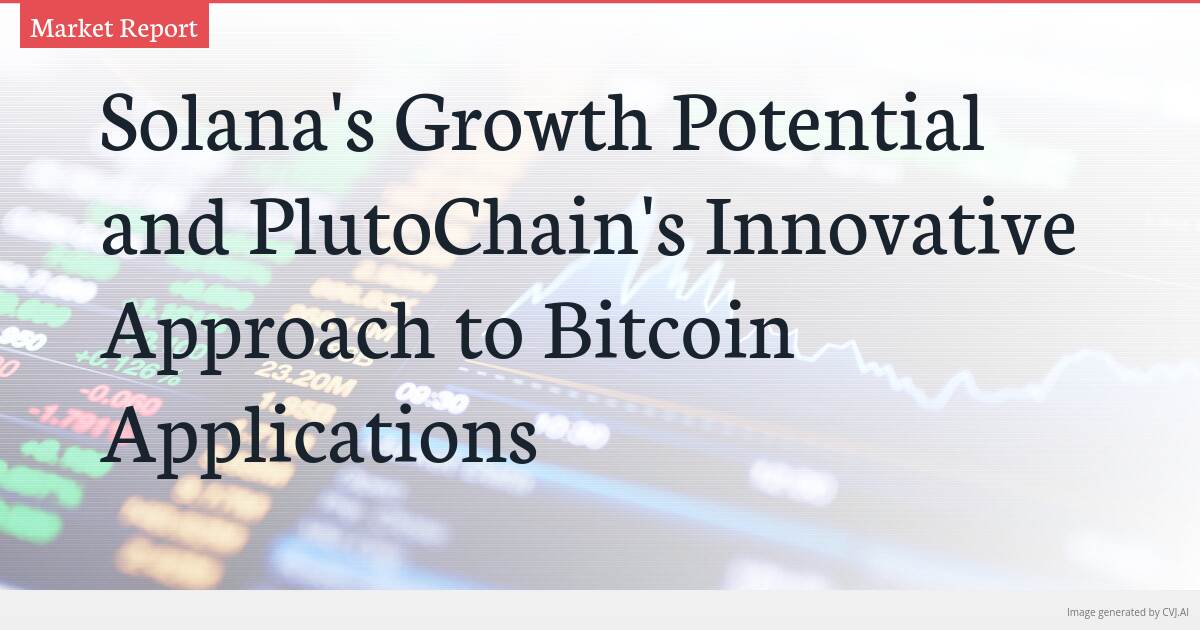This summary text is fully AI-generated and may therefore contain errors or be incomplete.
Solana has established itself as a significant contender in the blockchain industry, recognized for its impressive speed and efficiency. With the capability to handle over 65,000 transactions per second, it has garnered a growing user base and developer interest, particularly due to its low transaction fees.
Solana’s Market Position
This affordability has made Solana a favored platform for decentralized finance (DeFi) projects and non-fungible token (NFT) marketplaces. Prominent applications like Magic Eden and Serum demonstrate its potential and the advantages it offers over competitors.
Analysts are optimistic about Solana’s future, forecasting a remarkable 700% price increase by 2025. This prediction is supported by several factors, including the rapid expansion of its ecosystem and increasing adoption within the Web3 landscape.
Future Prospects and Institutional Interest
As more developers are drawn to Solana, the number of decentralized applications (dApps) is expected to rise across various sectors. This growth will further strengthen its market position and enhance its attractiveness to tech-savvy investors and institutions seeking scalable blockchain solutions.
Institutional interest is vital for Solana’s growth prospects. Major companies are investigating the blockchain’s potential for tokenized assets, blockchain-based gaming, and decentralized finance, which adds credibility to its future.
Competitive Landscape
While Solana is gaining considerable attention, it faces competition from emerging projects like PlutoChain ($PLUTO). PlutoChain aims to transform the capabilities of Bitcoin by developing a comprehensive ecosystem for new applications.
Although Bitcoin is valued for its security and decentralization, its limited programmability has restricted its use in advanced applications such as DeFi, NFTs, and dApps. PlutoChain addresses these challenges by introducing a hybrid Layer-2 solution that merges Bitcoin’s security with the functionality of Ethereum and Solana.
PlutoChain’s Innovative Approach
This innovative design is intended for scalability, enabling rapid transaction processing and lower costs compared to Bitcoin’s base layer. Such features could attract developers seeking to create high-performance applications without the congestion and fees often associated with Ethereum.
PlutoChain’s potential extends beyond transaction efficiency. It facilitates the development of decentralized finance platforms, NFT marketplaces, and even AI-powered tools, providing a versatile environment for innovation.
Conclusion
As the landscape of decentralized applications evolves, PlutoChain’s approach may redefine the future of blockchain technology. By combining Bitcoin’s strengths with the capabilities of more programmable networks, it could usher in a new era of applications that meet the growing demands of users and developers alike.
In summary, the rising interest in Solana highlights its speed, low costs, and expanding ecosystem in DeFi and Web3. However, the emergence of projects like PlutoChain indicates that innovation is not confined to established players, suggesting a dynamic future for the blockchain space.
📎 Read the original article on coinspeaker.com


